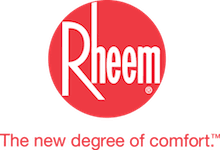I. Introduction
In the home and industrial cooling systems world, an ongoing debate centers on the merits and drawbacks of shading HVAC units to boost their efficiency.
The HVAC system, an abbreviation for Heating, Ventilation, and Air Conditioning, is a foundational component in modern architectural design and infrastructure. This intricate system not only manages temperature but also ensures the quality of indoor air.
Installed in numerous buildings, from residential homes to sprawling commercial complexes, HVAC systems are pivotal in creating comfortable and sustainable environments, optimizing heating during colder months and cooling during warmer periods.
There is a prevalent belief that shading these units can offer increased efficiency, leading to cost savings and prolonged equipment lifespan.
This article delves deep into the intricacies of this discussion, providing insights into how HVAC units function, the theoretical and practical implications of shading, and the broader context in which these systems operate.
II. How HVAC Units Work
Understanding the intricacies of HVAC operation is pivotal to the shading debate. The condenser is at the heart of the cooling process, a crucial component that releases accumulated heat from the refrigerant, allowing it to cool.
This release process heavily depends on the outside air. Ambient air is pivotal in heat transfer, ensuring the refrigerant cools down effectively.
Therefore, anything that influences the outside air’s temperature or quality can impact the efficiency of the HVAC system.
III. The Shade Debate
Supporters of the shading concept argue that the condenser operates under reduced temperatures by preventing direct sunlight from heating the HVAC unit.
This, in theory, should result in a system that doesn’t have to work as hard, thereby boosting “HVAC efficiency.” This idea often involves constructing a cover that keeps the system in the shade.
However, it’s essential to understand that while there might be some truth, the efficiency gains from shading can be minimal.
IV. Potential Drawbacks of Shading
Shading has its potential pitfalls. One of the most significant issues associated with shading devices is the risk of restricted airflow.
A cover or shading mechanism can impede ambient airflow, which is crucial for the condenser’s cooling process. Furthermore, high “ambient temperature” can reduce shading effectiveness, especially in regions prone to intense heat.
Another critical aspect to consider is cleanliness. Keeping the shaded area free from debris is imperative to ensure smooth operation.
V. The Feasibility of Building a Shaded Room
Diving into the practical aspect, the idea of building a dedicated “shaded room” for the condenser unit surfaces in some discussions.
However, the impracticality and costs associated with such a venture often outweigh the potential benefits. Constructing a separate room involves architectural changes and maintenance, possibly leading to potential air circulation issues.
Financially, the investment needed for creating such a room rarely justifies the slight improvement in “air conditioner efficiency” it might offer.
VI. Exceptions to the Rule
In any debate, there are always exceptions. While larger HVAC units might see minimal efficiency gains from shading, smaller individual air conditioners, especially the portable or window types, can benefit more noticeably.
These smaller units, with less power and capacity, might show discernible efficiency improvements when shielded from direct sunlight. However, it’s essential to remember that these are exceptions rather than the rule.
VII. Shading Your Home vs. Shading Your HVAC Unit
Distinguishing shading strategies for homes and HVAC units is crucial. While shading the HVAC might offer minimal benefits, shading the house—especially with deciduous trees—can result in substantial energy savings.
Trees shield the house from direct sunlight, reducing cooling needs, enhancing the property’s aesthetic appeal, and contributing to a healthier environment.
VIII. Seasonal Considerations
Seasonality plays a significant role in the maintenance and operation of HVAC units. Sometimes, shading the unit can be beneficial, especially during milder seasons.
However, as seasons shift to fall and winter, there are risks associated with covering the HVAC. Moisture accumulation, debris collection, and reduced airflow can all stem from ill-advised seasonal covers, potentially reducing the unit’s lifespan.
IX. Conclusion
The debate surrounding “HVAC unit shading” is multifaceted, with potential advantages and disadvantages.
While boosting HVAC efficiency through shading is appealing, the practical implications and potential drawbacks must be considered.
A holistic approach, considering all aspects—from the basics of condenser cooling to broader shading strategies—is essential for an informed decision.
















